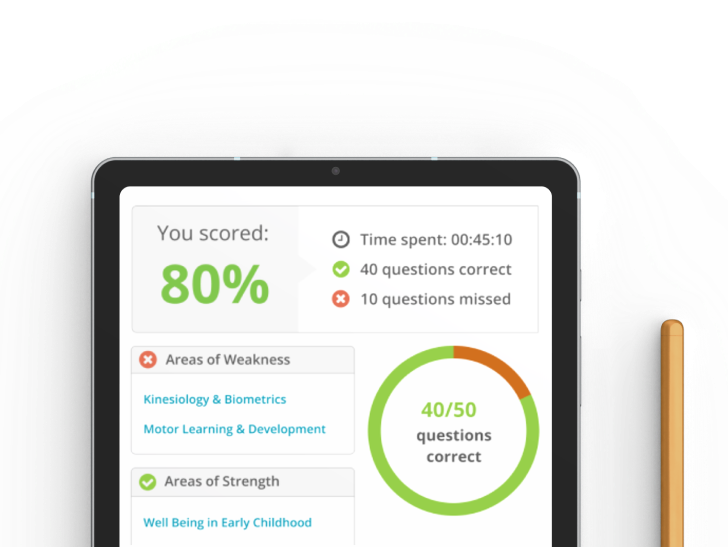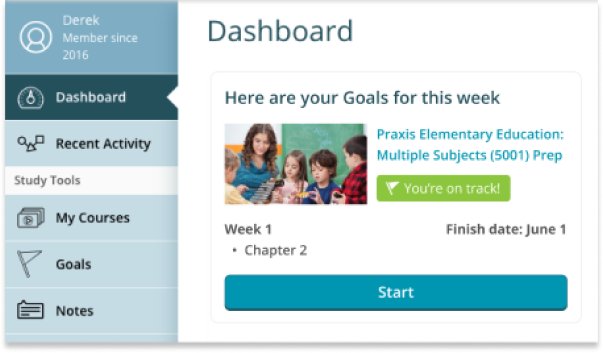
The correct answers are highlighted with green below. Create an account to keep studying for the TExES English Language Arts & Reading 4-8.
Get immediate help for your certification exam. Get immediate help for the TExES. Get immediate help for TExES English Language Arts & Reading 4-8.
1508 Practice questions 213 Videos 273 Lessons 213 Flashcards Practice questions FlashcardsEasy-to-follow study guides, practice tests and resources.
The Texas Educator Examination of Educator Standards (TExES) English Language Arts and Reading 4-8 (ELAR) exam is a certification exam intended to evaluate a teaching applicant's understanding of the subject matter, as well as their ability to put their knowledge into practice in the classroom. The English 4-8 TExES exam is part of the TExES teacher certification process for middle school (grades 4-8) Language Arts and English teachers in the state of Texas.
The English content exam, as the ELAR is sometimes called, covers a number of content areas related to English and Language Arts, from orality and early literacy development, to responding to written and visual texts, to study and inquiry skills. Because the ELAR 4-8 exam evaluates both content area knowledge and classroom competencies, test-takers can expect to encounter a range of question types on the day of the exam. The following sections provide an overview of the TExES ELAR 4-8 exam, including information about signing up to take the test, the format of the exam, and what kinds of questions an examinee can expect to encounter.
1508 Practice questions 213 Videos 273 Lessons 213 Flashcards Get immediate help for TExES English Language Arts & Reading 4-8.Easy-to-follow study guides, practice tests and resources.
The TExES English Language Arts and Reading 4-8 exam is a computer-based test and can be taken at various testing centers in Texas and throughout the United States. For TExES exam registration, applicants should have completed their Education Preparation Program, or have had a request submitted by their school. TExES ELAR 4-8 test dates are by appointment and can be scheduled year-round. However, appointments are first register, first serve, so depending on demand there may be a wait time. The TExES exam cost is $136, though additional fees may be required by the testing center.
On exam day, Texas has a few requirements that everyone is expected to comply with. Here are some things to remember for the appointment:

The TExES English Language Arts and Reading 4-8 is made up of 100 multiple choice questions that examinees have a total of five hours to complete. The exam is a computer-based and administered in a TExES testing centers where test-takers are forbidden from using an kind aid.
The questions on the TExES ELAR 4-8 exam are divided uinto two pap rts, each written to assess specific standards set out by the Texas Education Agency (TEA).
The TExES ELAR 4-8 contains 100 selected-response questions. The two parts of the exam are not equally weighted - Part I accounts for roughly 33%, while Part II makes up roughly 67% of the exam's total. Therefore, examinees may want to adjust their studies to reflect this ratio and give more time to prepare for Part II's question content.

Watch concise and engaging video lessons that help with TExES English Language Arts & Reading 4-8 prep.
Part of the certification for Language Arts and English teachers in Texas involves passing the English content exam, so the test is designed to assess not just a teacher's content knowledge, but also the skills and aptitudes they will bring into the classroom. Because of this, the questions on the TExES English Language Arts and Reading 4-8 exam require subject matter knowledge, understanding of pedagogical practice, and critical thinking abilities. It can be helpful to break the test down to its parts and to consider the competencies being assessed in the test's two sections.
First part of the TExES English Language Arts and Reading 4-8 exam, which accounts for about 33% of the exam, assesses a potential teacher's understanding of three competencies for middle school language arts teaching set out by the TEA:
1. Oral Language
Questions related to this competency will test on oral language and reading development, foundational linguistic concepts, and developmental stages in language acquisition. Skills related to oral language development (providing language instruction that supports student learning, or that strengthens reading proficiency by interrelating written and oral language) will be assessed as well.
2. Early Literacy Development
Here potential teachers will need to demonstrate their understanding of literacy development in young readers and the foundations of reading. They should also be prepared to identify:
Skills related to this section could include providing students with opportunities for guided reading or effective ways of using focused instruction to respond to individual students' literacy needs.
3. Word Identification Skills and Reading Fluency
The Word Identification Skills and Reading Fluency competency asks that teachers know and understand structural analysis, blending, and sight word vocabulary, and how these contribute to developing reading fluency. Test takers should be familiar with ways of meeting individual differences when it comes to word identification proficiency and best practices for responding to those differences. Potential teachers should familiarize themselves with strategies students might use to improve fluency that are rooted in self-correction or collaborating with parents and caregivers to promote fluency and skills acquisition.
The second part of the TExES ELAR 4-8 exam accounts for roughly 67% of the exam's content, and addresses the following five competencies:
4. Reading Comprehension and Assessment
This competency covers the importance of reading as it relates to student learning. Prospectives teachers should be able to:
Skills assessed might include using what a student already knows to further develop their reading comprehension or developing comprehension skills and applying knowledge by generating questions.
5. Reading Applications
Just as different kinds of writing are deployed in different situations or audiences, there are also different ways of reading. Prospective teachers need to show:
6. Written Language: Writing Conventions
The Writing Conventions component of the test assesses knowledge of the nuts and bolts of writing including spelling, punctuation conventions in written English, and the development of those conventions over time. An examinee may need to demonstrate best practices for teaching the conventions of grammar and punctuation to students, including to ESL students.
7. Written Language: Composition
For this competency, teachers should review conventions of classroom writing, academic writing, writing processes, drafting and revision, and writing for a specific audience. They will also need to demonstrate an ability to make choices about effectively teaching writing processes such a pre-writing, drafting and revision, in a classroom setting.
8. Viewing and Representing
Texts that students encounter are not limited to the written word, but literacy and interpretation are still important when it comes to non-written texts, such as images, still or moving across a variety of media. This competency covers
9. Study and Inquiry Skills
Being a successful student isn't just about knowing the content. Good students have good academic habits. The Study and Inquiry Skills competency is all about making sure that a new teacher understands the importance of good study habits to academic success and can pass along to students the tools they need to be successful. Examinees should demonstrate:
Examinees of the TExES ELAR will be given a scaled score of between 100 and 300 and will need to score at least a 240 to pass. Wrong answers, though they do not add to the score total, are not penalized either.
According to the Texas Education Agency, the passing rate from 2015 to 2020 ranged from 76% to 79%. TExES scores can be viewed on the examinee's test account within 28 days of the test, with scores posted twice a month on designated score report dates.

Find a study plan that can get you ready for your certification exam, whether you have six months or six days.
The TExES English Language Arts and Reading 4-8 exam covers a lot of material and assesses not only the examinee's knowledge of English and Language Arts, but their understanding of pedagogical practices as well. Studying for such a comprehensive exam can feel overwhelming. It can help to break all that information down into smaller parts. Look at the test as bundles of questions related to each of the eight competencies developed by the TEA and listed above.
Further, it may be helpful to think of the content and skills as related - to pair each piece of content knowledge under a specific competency with a classroom skill. Studying them in tandem can be a way of developing a deeper understanding of both the content and skills assessment. A TExES ELAR 4-8 Study Guide can provide a productive way of organizing and following a study plan.
Taking a TExES English Language Arts and Reading 4-8 practice test (prefarably more than once) can highlight the subject areas and competencies that need the most attention, and give the test-taker a sense of how questions might be worded. The TExES Practice test can take a lot of the uncertainty out of the testing process and timing itself. TExES ELAR 4-8 practice tests can be found for free online, so taking them regularly while studying can provide an easy way to gauge progress and build confidence going into the test.
Amy Mayers, M.Ed. has taught middle school math for over 7 years. She is a Texas certified teacher for grades 4-12 in mathematics and has passed the TExES Math 4-8 and the TExES Math 7-12. Amy graduated with a B.S. in Mathematical Sciences from the University of Houston and a Master's degree in Curriculum and Instruction from the University of St. Thomas.
 |
The TExES English Language Arts and Reading 4-8 exam consists of 100 questions that assess content knowledge and classroom skills and requires a score of 240 (out of 300) to pass. Pass rates over the last several years have been fairly steady, with the average pass rate landing at about 78% from 2015 to 2019.
© Copyright 2024 TExEStest.org. All other trademarks and copyrights are the property of their respective owners. All rights reserved.